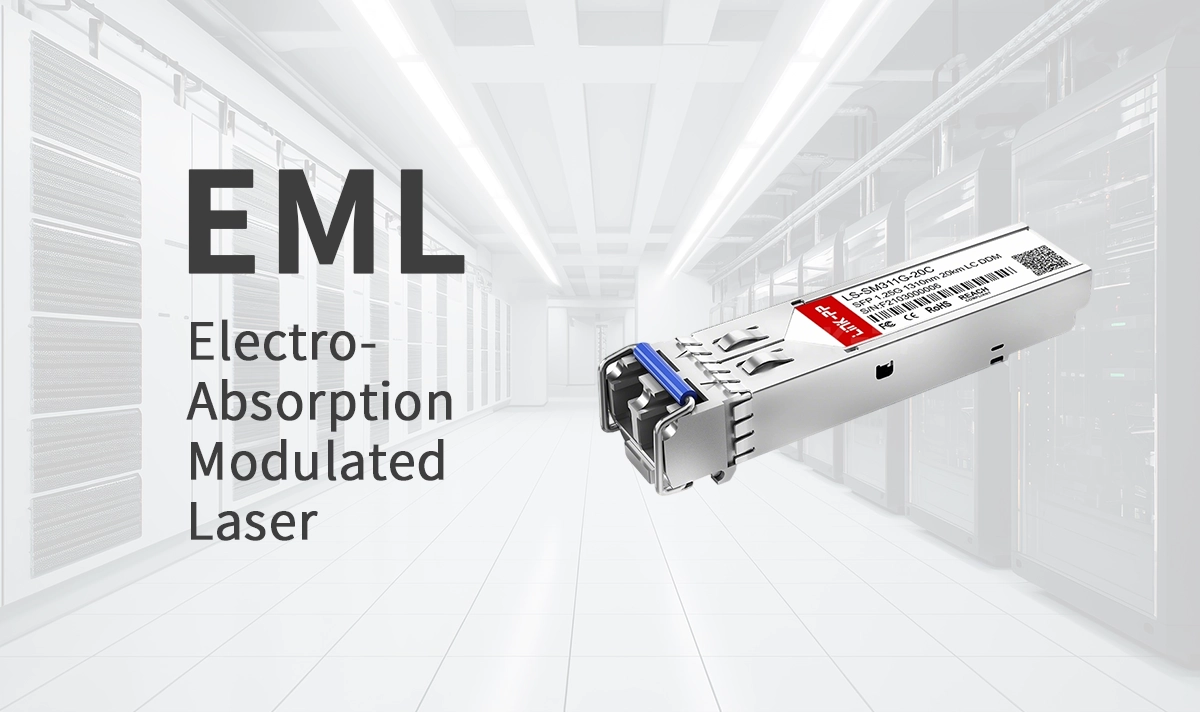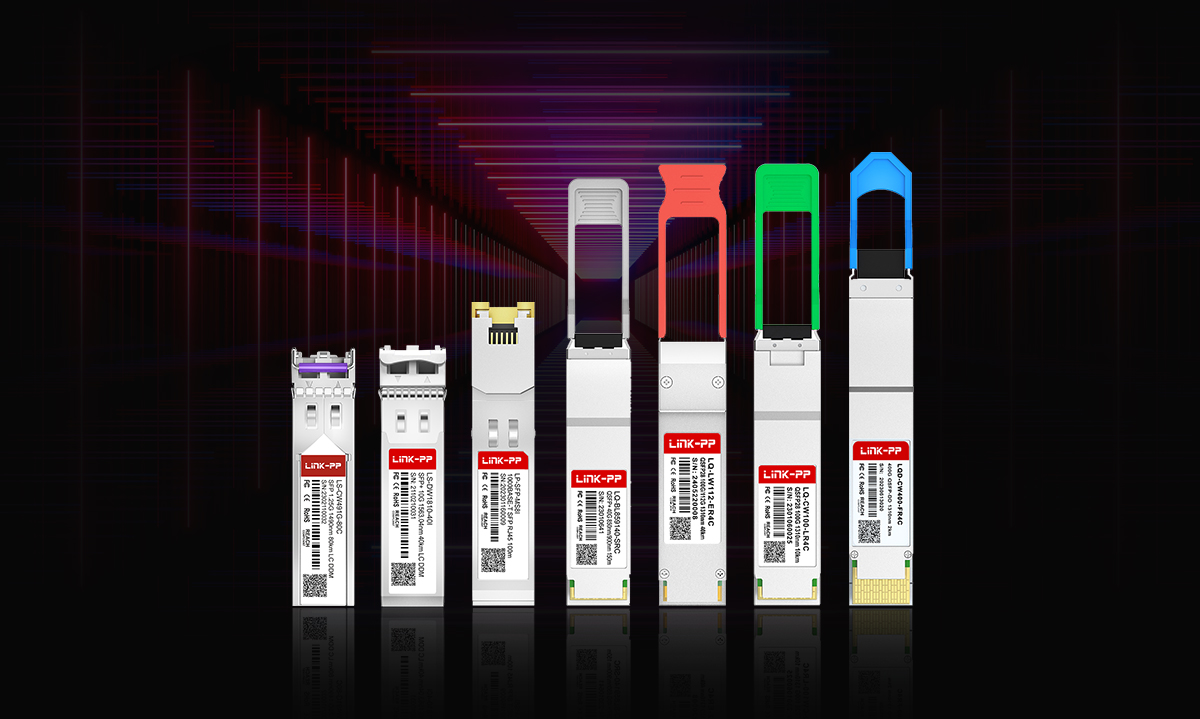An EML electro-absorption modulated laser combines a distributed feedback EMLs excel in long-haul links without needing amplifiers. For example, 28 Gbaud PAM4 signals can reach up to 240 km on standard SMF. Their stability makes them preferred for metro and backbone network deployments.(DFB) laser and an electro-absorption modulator in a single chip. This design allows the laser to generate a stable optical signal and then modulate it at high speeds, making it essential for fast, long-distance optical communication. EML technology powers high-speed connections in data centers and telecom networks. Growing demand for 5G, AI, and cloud services drives rapid adoption of eml electro-absorption modulated laser diodes. LINK‑PP features EML‑based optical transceivers offering reliable options for demanding applications.

Key Takeaways
EML diodes combine a laser and an electro-absorption modulator on one chip to enable fast and stable optical data transmission over long distances.
They provide high-speed modulation with low signal distortion, making them ideal for demanding networks like metro and backbone systems.
Compared to direct modulation lasers (DMLs), EMLs offer better signal quality, longer reach, and higher data rates but come with higher cost and power needs.
EML diodes are widely used in optical modules for data centers, telecom, and high-performance computing where speed and distance are critical.
EML Electro-Absorption Modulated Laser Basics
What Is an EML?
An EML laser is a type of advanced optical device used in high-speed communication systems. This device combines two main parts: a distributed feedback (DFB) laser and an electro-absorption modulator (EAM). The DFB laser generates a stable, single-wavelength light source. The EAM then modulates this light to encode data signals. By integrating both components on a single chip, the eml achieves high performance and compact size. This technology supports fast data transmission over long distances, making it essential for modern optical networks.
Note: EMLs play a key role in data centers, metro networks, and backbone communication systems. Their ability to maintain signal quality over long distances sets them apart from other laser types.
How EMLs Work
An EML (Electro-Absorption Modulated Laser) separates light generation and modulation for better performance. Its DFB laser section emits a continuous-wave (CW) light, which passes into the EAM (Electro-Absorption Modulator). The EAM controls light intensity by altering its absorption under an electric field—without changing the laser current. Unlike direct modulation lasers (DMLs), which modulate current and risk phase noise and wavelength drift, EMLs use external modulation for more stable, high-speed, long-distance optical communication.
This external modulation method offers several advantages:
It preserves the stability and quality of the laser output.
It enables higher modulation bandwidth, which supports faster data rates.
It reduces noise and signal distortion, improving overall signal integrity.
EML Structure
The structure of an EML laser consists of two main sections integrated on a single chip:
DFB Laser Section: This part uses a distributed Bragg reflector to lock the wavelength precisely. It typically measures about 300 micrometers in length. The DFB laser operates in continuous wave mode, providing a stable light source.
EAM Section: Positioned next to the DFB laser, the EAM section usually ranges from 80 to 120 micrometers. It uses the quantum confinement Stark effect to modulate the light. When an electric field is applied, the EAM changes its absorption, allowing it to encode data onto the light signal.
Some advanced EML designs include booster amplifiers to increase output power. These amplifiers use isolation grooves to separate the amplification region from the modulation region, ensuring efficient performance.
The integration of both sections on a single chip, often made from indium phosphide (InP), results in a compact and reliable device. This structure supports high-speed modulation and long-distance optical transmission, making the eml a preferred choice for demanding communication environments.
Tip: The precise arrangement and integration of the DFB laser and EAM sections are crucial for achieving the high performance required in modern optical modules.
EML Features Overview
1. High-Speed Modulation
EML diodes support ultra-fast modulation speeds critical for next-gen optical networks. Thanks to the integrated DFB laser and electro-absorption modulator, commercial EML chips can achieve up to 212 Gbps PAM4 (106 GBaud), with a 3dB bandwidth of ~65 GHz, enabling 800G LR4 transceivers and beyond. This design ensures rapid switching and precise optical control, outperforming many industry bandwidth standards.
Parameter | Value |
|---|---|
Max Modulation Speed | 212 Gbps PAM4 |
Extinction Ratio (ER) | ≥ 4.5 dB |
TDECQ | ≤ 2.0 dB |
3dB Bandwidth | ~65 GHz |
2. Low Chirp and Signal Quality
Unlike DMLs, which suffer from high chirp and signal distortion at high speeds, EMLs maintain low chirp, preserving signal integrity across the link.
Parameter | DML | EML |
|---|---|---|
Frequency Chirping | High chirp | Low chirp |
Signal Quality | Lower (distorted) | Higher (reduced chirp) |
Application Suitability | Short-distance | Long-distance |
3. Long-Distance Transmission
EMLs excel in long-haul links without needing amplifiers. For example, 28 Gbaud PAM4 signals can reach up to 240 km on standard SMF. Their stability makes them preferred for metro and backbone network deployments.
EML Limitations
⚡ Power & Cost
While high-performing, EMLs are more power-hungry and costlier than DMLs. The complex integration of EAM with DFB laser requires advanced manufacturing and adds 30–50% higher cost. Additional power may be needed for cooling and output boosters, especially in high-speed, temperature-sensitive applications.
🧩 Integration Challenges
Integrating EMLs into compact modules involves:
Thermal stability design to handle wavelength shifts
Control of parasitic capacitance for high-speed integrity
Optical and electrical isolation for performance consistency
MQW structure tuning to suppress carrier overflow and ensure high output
Advanced high-frequency layout and materials are essential to maintain performance under harsh conditions.
When to Choose EML
EML technology shines in scenarios where both speed and distance are critical—such as:
Long-haul optical communication
100G and higher transceivers
Data Center Interconnect (DCI) links
Telecom networks spanning tens of kilometers
In contrast, simpler, lower-speed, short-reach cases may favor DMLs due to lower cost and power requirements.
Many industry standards specify the use of EML diodes in optical modules. For example, 10G CWDM SFP+ modules that meet IEEE 802.3ae 10GBASE-LR/LW/ER/ZR standards use EML lasers in the transmitter section. These modules operate over single-mode fiber and require wavelength stability for long reach.
Tip: EML diodes are the preferred choice for optical modules in high-speed, long-distance optical communication systems, especially in metro and backbone networks.
Conclusion
EML technology sits at the core of high-performance optical modules. Its clean modulation and support for long-distance, high-speed data make it an excellent choice for telecom backbones and advanced data centers. Engineers select EMLs for long-haul, high-speed links. They consider distance, modulation type, and cost when choosing laser types for optical modules. LINK‑PP’s integration of EML-based transceivers into their official product line reinforces their dedication to delivering reliable and advanced optical solutions.

FAQ
What is the main advantage of using EML diodes in optical modules?
EML diodes provide high-speed data transmission and maintain signal quality over long distances. Their design supports stable performance in metro and backbone networks.
What makes EML diodes different from DML diodes?
EML diodes use an external modulator to encode data, while DML diodes modulate the laser directly. This structure gives EML diodes lower chirp and better signal quality.
What applications commonly use EML diodes?
Application Area | Example Use Case |
|---|---|
Metro Networks | Long-distance data transmission |
Backbone Networks | High-speed communication links |
Data Centers | Interconnects over single-mode fiber |
What is the typical transmission distance for EML-based modules?
EML-based modules often support distances from 40 km up to 120 km or more. This range makes them ideal for long-haul and metro network applications.
See Also
Essential External Parts That Make Up Optical Modules
Important Specifications Defining Optical Module Performance
Complete Overview Of Laser Varieties Used In Transceivers
Understanding The Basic Concept Of Optical Modules
Explaining The Role Of EDFA In Optical Communication Networks


